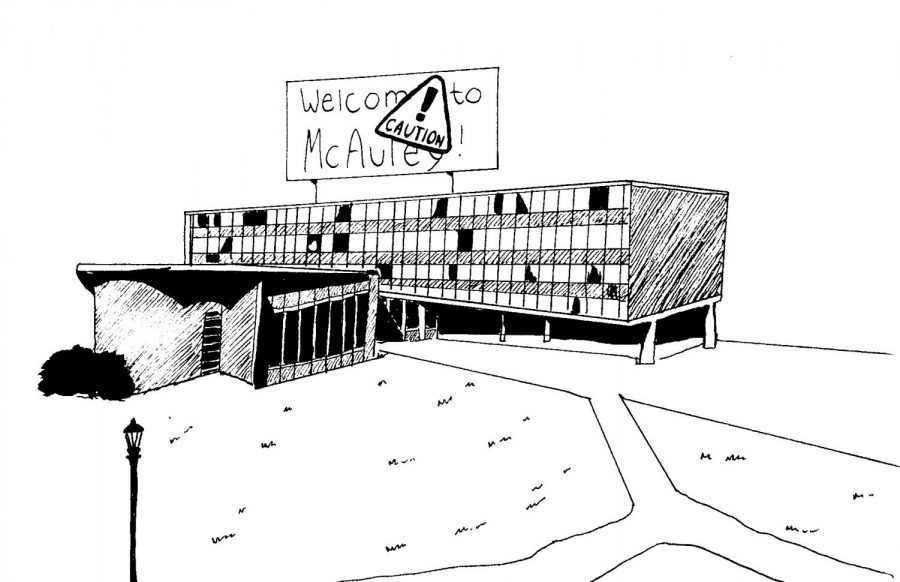Asbestos should not be a secret
November 20, 2019
In a Nov. 8 email sent to all residents of McAuley Hall on Trinity campus, UVM sought to “address any concerns and clarify any misinformation,” about the asbestos material in the building.
This message was sadly long overdue.
The email explained that the project discussed in our article “is intended to extend the life of McAuley Hall by replacing some external elements of the building.”
It goes on to say that once these replacements are being done, the asbestos existing in the building will be disturbed and require remediation.
“Any asbestos currently existing in these areas poses no health risks as long as it is not disturbed and remains contained,” the email stated.
Before this email was sent, our reporters scoured through documents provided by the board of trustees in late October. Buried in the project progress report, they found the plan to remove the asbestos in 2020.
This came as no surprise to any of us. And that’s the problem.
Rumors of this asbestos have existed for a long time.
But that’s all they were. Just unsubstantiated rumors.
In the email, UVM explains that asbestos is a heat and fire resistant material, used for things such as insulation and strengthening plastics and cement. Prolonged exposure to asbestos can cause chronic lung diseases like asbestosis and mesothelioma.
The University’s silence on this issue is simply irresponsible. When situations like this fail to be addressed by experts with solutions and clarifications, it leaves room for fear and confusion.
Now the University’s response to this editorial will probably be that they did not share this news sooner because they did not want to create unnecessary discomfort or concern as the asbestos is not harmful to any students as of now.
We recognize that the asbestos poses no immediate threat to residents of McAuley Hall. We also recognize that the plan to remove the asbestos has been in the works for a long time with a lot of preliminary work needed to be done before any concrete steps can be taken.
If the University had been transparent about the material’s existence, its harmlessness and their plan to remove it, we wouldn’t be here talking about this.
In order to prevent such events in the future and reduce concern, the University should be transparent with students about the presence of asbestos in its older buildings.
Honesty about the condition of McAuley may make for a public relations concern at first, but it also makes for a more informed student body.
It’s not just that they didn’t tell us it was there.
They didn’t tell us that it couldn’t hurt us.









David Trigg • Nov 21, 2019 at 6:29 am
Do any of the students bounce a ball in the corridors or rooms? Do they thump or kick a wall panel in frustration? Are windows and doors slammed? All of these actions can release asbestos fibres into the air.
It is a fact that asbestos containing products deteriorate with age and the weather. The fibres are miniscule and are easily inhaled into the lungs where they lie dormant for 2 to 4 decades before striking. Do not accept that it is safe if it is allegedly ‘managed’. It is not.
Search for ‘Philly schools asbestos’ to see just how bad a problem it is.
Remove the asbestos now.
Dave Trigg
Derby UK.